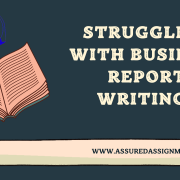Assessment Final Report and In-Class Presentation
Individual/Group Group (five people)
Length Part A—Report (3,500 words +/–10%)
Learning Outcomes
The Subject Learning Outcomes demonstrated by successful completion of the task below include:
a) Analyse relevant industry challenges to support the development of IS solutions for addressing specific organisational problems.
b) Produce the appropriate documentation to provide evidence of project progress with project stakeholders.
c) Demonstrate professional skills to complete individual and team tasks.
d) Communicate progress and solutions to the client/representative and non-specialists and adjust according to feedback.
Submission Due by 11.55 pm AEST/AEDT, Sunday, end of Module 6.1 (Week 11)
Weighting 30%
Total Marks 100 Marks
Assessment Task
In this assessment, you will finalise your report and recommendations to your client/organisation. You will incorporate all feedback provided by your lecturer throughout the trimester, including additional research or content to be completed. The final report must be structured as perthe guidelines detailed in these assessment instructions. Note, you are producing an industry-level final report, not resubmitting your previous assessments.
Please refer to the Task Instructions for details on how to complete this task.
Context
This trimester, you will actively contribute to a project team to deliver a business solution for a client. The assessment format is modelled on industry practice, and the subject is designed to leverage your knowledge of information systems management and industry techniques to help you transition to industry. All teams will complete one project, focused on the client’s/organisation’s brief
Instructions
This final report for your client/organisation will bring together the work you have completed throughout the trimester. It is essential that all feedback provided by your lecturer throughout the trimester is incorporated into this report. Note, there are additional requirements and sections.
The following structure should be used:
A title page. State the subject code and subject name, assignment title, organisation’s/client’s name, students’ names, students’ numbers and lecturer’s name.
A table of contents. This is mandatory for this assessment. You can create the table of contents using MS Word’s auto-generator. Instructions for which can be found here: https://support.office.com/en-gb/article/Create-a-table-ofcontents.
Introduction: This must include background information on the case study and client/organisation that has been provided to you. It should also state the purpose of the report and what you plan to deliver to your client/organisation (drawing on your Assessment 1, Project Plan). (150 words).
Purpose: Identify the purpose of the report for your client. What are you presenting to them and why? (75 words).
Background: Provide an overview of the client’s/organisation’s case that you have been provided. Outline the work undertaken to date, the steps in the process and the final outcome that you are presenting today. (125 words).
Scope: Clearly identify your project scope in relation to each of the following, the project:
a) goals and objectives;
b) exclusions;
c) constraints;
d) assumptions; and
e) deliverables (importantly, ensure you include what will not be delivered).
(200 words).
Stakeholders: Provide an updated overview of all key stakeholders who have been considered in the report to date, including their roles, level of impact and level of interest. In addition, provide a clear outline of the stakeholders that should be managed by the client/organisation should they choose to adopt your recommendations. (150 words).
Empathise:
– Customer personas: Develop a Customer Persona that can be used as the basis for determining the other elements of the ‘empathise’ stage. (250 words or equivalent diagrams).
– Empathy maps. Complete an empathy map for each customer persona you have developed. This should include how/what the customer persona hears, thinks, says and sees in relation to the client/organisation. In addition, it should state their ‘pains’ and gains’. (200 words or equivalent diagrams).
– Research. Conduct research into the customer personas you have developed and identify and describe what their ‘needs’ are in relation to the client’s/organisation’s product or service. Group these based on topic or ‘need type’. Provide in a clearly structured format, such as a table. (200 words).
– Stakeholder requirements. Based on what you have learned about the customer and the research you have completed clearly define the stakeholder requirements using the MoSCoW. (250 words).
Define:
– Problem Statement: A clear problem statement is imperative in meeting any client’s/organisation’s needs and agreeing on the path forward in a project. Clearly articulate the problem statement that you will be solving for the Client (100 words).
Ideate and Prototype. Using the problem statement you defined, develop a prototype solution that meets the needs of the customers you identified. Include:
– Brainstorm solutions for the Problem Statement identified, provide evidence of this ideation in your appendix (200 words, or equivalent diagrams and evidence in appendix)
– Select a solution to take through to the prototyping stage. Describe the solution and explain how you identified that this solution was the best for your client/organisation (250 words);
– A table identifying of the UX/UI elements to be considered in prototype development. (200 words);
– Wireframes or interface designs for how the prototype will work (and how customers will interact with it). (400 words or equivalent diagrams/mock-ups).
Test. In this section you will test your solution. Identify the testing process your team will use, then test your solution. Identify and describe how well your prototype solution meets the stakeholder requirements you identified and the goals you identified for the prototype. Identify any potential gaps and opportunities for future improvements.
Provide evidence of the testing you completed. This can be in a variety of methods including notes, results, pictures (350 words or equivalent).
Implement. Provide your final recommendations to the client. Ensure that you:
– Clearly describe and explain how this solution addresses the problem statement you defined. Explain why your client/organisation’s customers will want to use this solution (200 words).
Recommendations. Provide a final summary on the overall experience of the project, potential future steps and additional opportunities identified. (200 words)
Appendices. You must include a copy of the project status reports and meeting minutes that you completed as a group from weeks 2–10.
Format of the report
The report should use 11-point Arial or Calibri font, be 1.5–line spaced for ease of reading and display page numbers at the bottom of each page. If diagrams or tables are used, attention should be given to pagination to avoid the loss of meaning and continuity by unnecessarily splitting information over two pages. Any diagrams must be appropriately captioned.
Referencing
It is expected that you reference any lecture notes used and any additional sources in the relevant subject area based on your readings and further research. It is essential that you use appropriate APA style for citing and referencing research. For more information on referencing, visit: http://library.laureate.net.au/research_skills/referencing.
You are strongly advised to read the rubric, which is an evaluation guide with the criteria for grading the assignment. This will give you a clear picture of what a successful report looks like.
Submission Instructions
Submit this task via the Assessment link in the main navigation menu in MIS606 Information Systems Capstone. The learning facilitator will provide feedback via the Grade Centre in the LMS portal. Feedback can be viewed in My Grades.
Please note that during the submission process, if you would like to include appendix items in your submission, once your first item has been uploaded, click ‘Browse Your Computer’ to attach your extra documents as an appendix. Then, click the Final Submit button.
Academic Integrity
All students are responsible for ensuring that all work submitted is their own and is appropriately referenced and academically written according to the Academic Writing Guide. Students also need to have read and be aware of Torrens University Australia Academic Integrity Policy and Procedure and subsequent penalties for academic misconduct. These are viewable online.
Students must also keep a copy of all submitted material and any assessment drafts.
Special Consideration
To apply for special consideration for a modification to an assessment or examination due to unexpected or extenuating circumstances, please consult the Assessment Policy for Higher Education Coursework and ELICOS and if applicable to your circumstances, submit a completed Application for Assessment Special Consideration Form to your learning facilitator.











